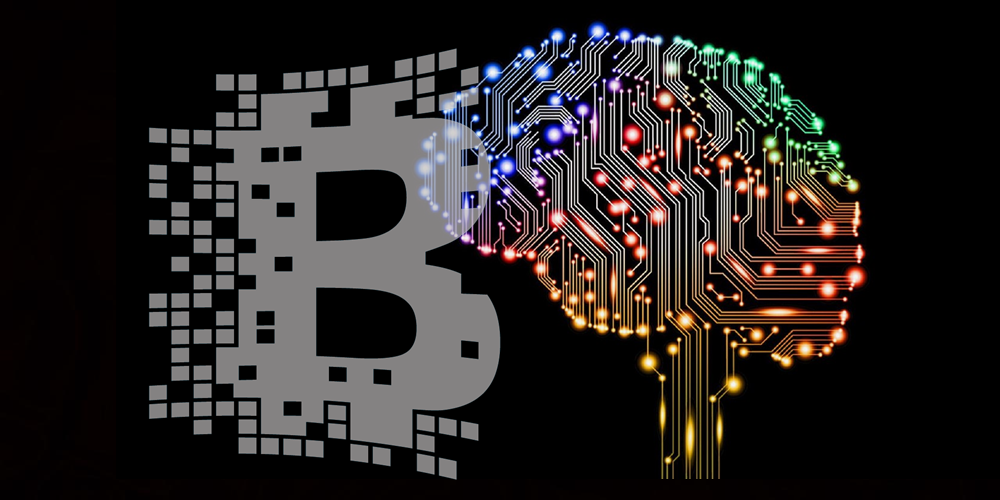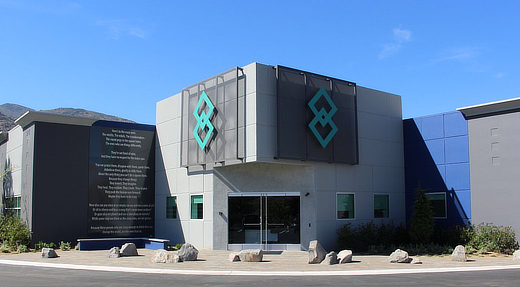Table of Contents
Technology is changing with Artificial Intelligence coming into the fray. And the rate at which it is changing is faster than ever, only set to get speedier in the coming days. The amount of technological advancement that has happened in this century is unparalleled when looking at the comparison with the entire human civilization era. Undoubtedly one of the most important turns of events in the last decade or so has been artificial Intelligence’s presence.

Humans have been striving to put their Intelligence into machines and replicate their capability on a large scale for a while now. It’s fair to say that it is now that machine learning and Artificial Intelligence are kicking in and can be observed in most walks of life. Seen as a gold mine, technology-based companies leaving no stone unturned to make the best of it, estimated to push the market boundaries to a whopping $126 billion by 2025.
Artificial INtelligence in Blockchain and Crypto
Building on this Artificial Intelligence technology has been blockchain and cryptocurrencies, which have surpassed all expectations and are threatening to take on old school fiat currencies head-on. With cryptocurrencies and AI well on their way to becoming undisputed fortresses, it is interesting to see how the wave of new advancements in Artificial Intelligence and machine learning will be impacting public ledger technology.
Before we dive deep into how AI and cryptocurrency function with each other, let us start with a few simple definitions and explanations. Artificial Intelligence, commonly referred to as AI, is understanding and mastering building machines that can perform fairly complex tasks requiring intelligence. State-of-the-art technologies like an artificial neural network, machine learning, and deep learning are used to combine human intelligence with that of a machine.
Blockchain is a modern age filing system used for managing information by storing encrypted data in a decentralized ledger format. Making data tamper-proof is one of the prime objectives behind doing this. With the data being distributed, post encryption, across multiple computing devices, extremely robust databases get created which are accessible for updates to people who have required authority or permission.
From an academic and theoretical perspective, plenty has been discussed on a seamless conversion of the above-mentioned patch breaking technologies. However, in the real world, application-wise, there is still some development that needs to be done. The situation is changing, is likely to change as new breakthroughs happen in the technology domain.
Here are three amazing ways that prove how compatible blockchain and AI are.
#1. Encryption and AI gel together perfectly
By nature, the data entered on blockchains are extremely secure. The reason being the inherent cryptography on the filing system of blockchain.
It is a clear indicator of blockchain’s potential to store extremely sensitive data, personal or professional. On smartly processing such data, it can be used to add convenience and value to our lives. Take healthcare systems for that matter. How great would it be if they can accurately diagnose medical conditions based on records and reports? The same goes for recommendation engines of Google or Amazon which understands the context of what exactly you are searching for or looking to buy.
It goes without saying that the sensitivity level of the data they feed to the system is extremely high and personal (collected from the users when they browse or interact in any other form with their application). The companies involved, inevitably have to put in plenty of their resources for maintaining data security standards. Despite it, data breaches on massive scales continue to happen, resulting in the loss of millions’ personal data.
What a blockchain system does is hold information in a state of encryption. Private keys, which generally aren’t more than a Kbs of data, need to be safeguarded for securing all the information associated with the chain.
Almost $9 million gets washed away due to scams every day in cryptocurrency. It surely needs to be checked upon.
Artificial Intelligence brings wonderful angles to the security aspect. Multiple pieces of research are going on for building algorithms, capable of operating or processing data, whilst it’s still encrypted. Data processing in general exposes data in its actual form, increasing security issues. It can be kept in check, reducing the breaches and making the whole system safer.
#2. AI’s decisions can be tracked, understood and explained by blockchain
A decision coming out of an AI system can occasionally be not so simple to comprehend. It is mainly due to their capability of independently processing multiple variables and understanding the critical ones for accomplishing the task, the system is trying to find a solution to.
In the case of fraudulent financial transactions, AI algorithms are constructive. They can accurately pinpoint the transactions which seem unnatural, thus blocking them or probing an investigation.
For the time being, human intervention is required in auditing these decisions for a higher accuracy percentage. With the large chunk of data that gets taken into account, manual intervention becomes a complex and tedious task. The retailing giant, Walmart, uses transactional data collected over months and years from its stores, for the AI systems to tell them where to put what products for increasing the sales.
Shifting all of this to a blockchain system, where decisions will get recorded based on each data point, considered one at a time, the auditing will become far less complex. There will be a sense of confidence about the data being tamper-proof in the transition from being recorded to getting audited.
Irrespective of how starkly visibleAI’se great advantages in multiple domains, if the people don’t show faith in it, AI’s use will be limited to a handful of applications. Putting up the decision making steps on a blockchain system can be a significant step towards increasing transparency.
#3. Blockchains can be managed by AI better than humans or your regular conventional systems

Despite being quick in processing, a computer is traditionally a stupid device. Explicit instructions need to be provided for them to perform a task successfully. What this means is being in encryption format, the blockchain data running on the not so smart computers, need massive amounts of computing power from the system. For example, in a Bitcoin blockchain, a hashing algorithm that helps in mining blocks has to go for a ‘brute force’ approach. This means quickly and effectively trying a huge range of combinations of all the characters, for the right one which can fit, thus verifying the transaction.
Going with the AI model, will facilitate in moving away from approaches like brute force, resulting in the management of tasks thoughtfully and intelligently. Take a human for example who is an expert code-cracker. Throughout their career, they improve and become better by successfully cracking more codes and learning from their experiences. Cryptocurrency mining algorithms powered by machine learning follows a similar trajectory, with the exception that it does not take decades or a lifetime for it to become an expert, considering the data fed during training is apt.
Artificial Intelligence and blockchain are two giant technological leaps that humans have taken, and it would be an understatement to say that together they have the potential to be absolutely revolutionary. Working together, each other’s capabilities get enhanced, offering a wider scope of accountability and better oversight.





No Comment